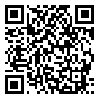Volume 17, Issue 2 (June 2019)
Iranian Rehabilitation Journal 2019, 17(2): 141-148 |
Back to browse issues page
Download citation:
BibTeX | RIS | EndNote | Medlars | ProCite | Reference Manager | RefWorks
Send citation to:



BibTeX | RIS | EndNote | Medlars | ProCite | Reference Manager | RefWorks
Send citation to:
Naderyan S, Sahaf R, Akbari Kamrani A A, Abolfathi Momtaz Y, Ghasemzadeh H, Papi S. Physical Activity Among Iranian Former Sportsmen and Athletes as Possible Evidence for Continuity Theory of Aging. Iranian Rehabilitation Journal 2019; 17 (2) :141-148
URL: http://irj.uswr.ac.ir/article-1-921-en.html
URL: http://irj.uswr.ac.ir/article-1-921-en.html
Salman Naderyan1 

 , Robab Sahaf *
, Robab Sahaf * 

 2, Ahmad Ali Akbari Kamrani2
2, Ahmad Ali Akbari Kamrani2 

 , Yadollah Abolfathi Momtaz2
, Yadollah Abolfathi Momtaz2 

 , Hossein Ghasemzadeh1
, Hossein Ghasemzadeh1 

 , Shahab Papi1
, Shahab Papi1 




 , Robab Sahaf *
, Robab Sahaf * 

 2, Ahmad Ali Akbari Kamrani2
2, Ahmad Ali Akbari Kamrani2 

 , Yadollah Abolfathi Momtaz2
, Yadollah Abolfathi Momtaz2 

 , Hossein Ghasemzadeh1
, Hossein Ghasemzadeh1 

 , Shahab Papi1
, Shahab Papi1 


1- Department of Ageing, University of Social Welfare and Rehabilitation Sciences, Tehran, Iran.
2- Department of Ageing, Research Center on Ageing, University of Social Welfare and Rehabilitation Sciences, Tehran, Iran.
2- Department of Ageing, Research Center on Ageing, University of Social Welfare and Rehabilitation Sciences, Tehran, Iran.
Abstract: (6465 Views)
Objectives: Physical activity in late life may be a continuity of activity pattern in the early stages of life. The current study aimed to assess physical activity levels in former Iranian sportsmen and athletes, in 2016.
Methods: This cross-sectional study used convenience sampling method to select 223 former Iranian sportsmen and athletes living in Tehran City, Iran. Informed consents were obtained from all study participants before the study. The short-form Persian version of the International Physical Activity Questionnaire (IPAQ) was used for assessing physical activity. To achieve demographic information, a demographic data Questionnaire was used. For analyzing the obtained data, SPSS was used.
Results: The Mean±SD age of the study participants was 70.81±8.29 years. In total, 5.8%, 42%, and 52.9% of the former athletes had less than 10 minutes of walking, moderate- and vigorous-intensity physical activity, respectively. About 4.9% of the individuals reported walking on a regular basis and none of them reported daily moderate- and vigorous-intensity physical activity. Moreover, 8.5% of the individuals failed to report walking for at least 10 min/d. Totally, 43.5% of the individuals reported no moderate-intensity physical activity and about 56.1% of them did not participate in any vigorous-intensity physical activities. Furthermore, 31.4, 8.5, and 5.8 of the athletes reported walking, moderate- and vigorous-intensity physical activity for more than 150 minutes per week, respectively. According to the three types of activity defined by the IPAQ, 49% of the athletes were inactive, 36.3% were minimally active and about 15% were physically active. Physical activity decreased with increasing age (P<0.01; r=-0.529) and had a direct relationship with educational level (P<0.01; r=0.278).
Discussion: The findings highlight the importance of considering active intervention programs at younger ages to ensure better leisure participation of the elderly, especially in physical activity.
Methods: This cross-sectional study used convenience sampling method to select 223 former Iranian sportsmen and athletes living in Tehran City, Iran. Informed consents were obtained from all study participants before the study. The short-form Persian version of the International Physical Activity Questionnaire (IPAQ) was used for assessing physical activity. To achieve demographic information, a demographic data Questionnaire was used. For analyzing the obtained data, SPSS was used.
Results: The Mean±SD age of the study participants was 70.81±8.29 years. In total, 5.8%, 42%, and 52.9% of the former athletes had less than 10 minutes of walking, moderate- and vigorous-intensity physical activity, respectively. About 4.9% of the individuals reported walking on a regular basis and none of them reported daily moderate- and vigorous-intensity physical activity. Moreover, 8.5% of the individuals failed to report walking for at least 10 min/d. Totally, 43.5% of the individuals reported no moderate-intensity physical activity and about 56.1% of them did not participate in any vigorous-intensity physical activities. Furthermore, 31.4, 8.5, and 5.8 of the athletes reported walking, moderate- and vigorous-intensity physical activity for more than 150 minutes per week, respectively. According to the three types of activity defined by the IPAQ, 49% of the athletes were inactive, 36.3% were minimally active and about 15% were physically active. Physical activity decreased with increasing age (P<0.01; r=-0.529) and had a direct relationship with educational level (P<0.01; r=0.278).
Discussion: The findings highlight the importance of considering active intervention programs at younger ages to ensure better leisure participation of the elderly, especially in physical activity.
Article type: Original Research Articles |
Subject:
Aging Studies
Received: 2018/10/10 | Accepted: 2019/02/2 | Published: 2019/06/1
Received: 2018/10/10 | Accepted: 2019/02/2 | Published: 2019/06/1
Send email to the article author
| Rights and permissions | |
 |
This work is licensed under a Creative Commons Attribution-NonCommercial 4.0 International License. |





